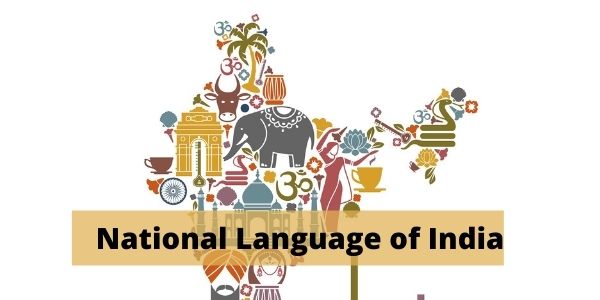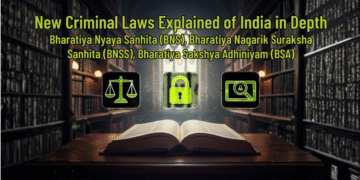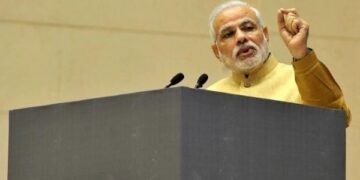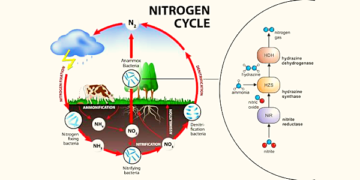To begin with, in this article, we have added all information related to the National Language of India or Rashtra Bhasha of India. Further, you will also find details like the official language of India and 22 official languages of India. It is also essential to know some exciting factors about Indian languages. So, let’s learn exciting things about the 22 official languages of India and other related details. Further, when you plan to write any competitive exams, knowing about the essential points on the National Language of India becomes necessary. Later, try to take down all important points while reading the below article.

Introduction
In the first place, when we talk about India, it is a multi-cultural nation. So in India, we see various cultures, religions, languages, festivals, etc. Further, languages spoken in India belong to different language families, and the major among them is Indo- Aryan languages spoken by 78% of Indians and Dravidian languages spoken by 19.64% of Indians. Later, both families together are sometimes known as Indic languages. Besides, 2.31% of the population belong to the Austroasiatic, Sino–Tibetan, Tai–Kadai, and a few other minor language families and isolates. Further, India has the world’s fourth-highest number of languages, following Nigeria, Indonesia, and Papua New Guinea. Besides, the Indian subcontinent is home to the third most spoken language globally, Hindi-Urdu; the sixth most spoken language, Bengali; and the thirteenth most spoken language, Punjabi.
Later, in the Indian Constitution, Article 343 says that the official language of the Union is Hindi in the Devanagari script. With an official use of English to continue for 15 years from 1947. Besides, Besides, according to the Eighth Schedule in the Indian Constitution mentions that 22 languages. Then, they are referred to as scheduled languages and given recognition, status, and official encouragement.
India – National Language of India
Further, the first thing that comes to mind when hearing India in various languages and religions. Besides, it occupies the greater part of South Asia, and the capital of India is New Delhi. But, then, it was built in the 20th century. Later, in the below table you will find some facts about the country. Besides, in the further part of the article you will find all information on the National Language of India, and all the other related details.
| Capital | New Delhi |
|---|---|
| Largest city | Mumbai (city proper) Delhi (metropolitan area) |
| Official languages | Hindi English |
| Recognized national languages | None |
| Native languages | 447 languages |
| Religion (2011) | 79.8% Hinduism 14.2% Islam 2.3% Christianity 1.7% Sikhism 0.7% Buddhism 0.4% Jainism 0.23% Unaffiliated 0.65% Others |
| Demonym(s) | Indian |
| • President | Ram Nath Kovind |
| • Vice President | Venkaiah Naidu |
| • Prime Minister | Narendra Modi |
| Legislature | Parliament |
| • Upper house | Rajya Sabha |
| • Lower house | Lok Sabha |
| • Republic | 26 January 1950 |
History
Before understanding on the rashtra bhasha of India, we will look into history of the same. To begin with, the Southern Indian language are from the Dravidian family. Besides, Proto Dravidian languages were spoken in India in the 4th millennium BCE and started into various branches around the 3rd millennium BCE. Further, the northern Indian languages from the Calestini family evolved from Old Indo-Aryan. Besides, there is no consensus on the particular time when the modern north Indian languages such as Hindi, Marathi, Punjabi, and Bengali. Later, the development of all languages was influenced by the social and political contact with foreign invaders and speakers of the other languages.
Further, the South Indian languages had a history independent of Sanskrit. Besides, all origins of the Dravidian languages, their developments, and the period of their changes are not unclear.
Later, talking about the Indian languages have corresponding different alphabets. Further, the two main families are those of the Dravidian languages and those of the Indo-Aryan languages, the former primarily confined to the south and the latter to the north.
Brahmic Script – National Language of India
It is from ancient India, having a common ancestor with European scripts. Further, the essential member of the family is Devanagari, who is also used to writing many other languages of India and Nepal. Besides, it includes Hindi, Konkani, Marathi, Nepali, Nepal Bhasa, and Sanskrit. Then, other scripts are included in the Eastern Nagari Script, and it is used to write Bengali and other languages like Bishnupriya, Manipuri, and easter Indic languages. Later, the earliest evidence Bhattiprolu was a great center of Buddhism during the 3rd century C.E. and from where Buddhism spread to east Asia.
The present Telugu script is derived from ‘Telugu-Kannada script,’ also known as ‘old Kannada script, owing to its similarity. Initially, minor changes were made. Later, it was called ad Tamil Brahmi.
Official Language of India
As mentioned above, India is known for its rich culture, tradition, and languages. Further, 700 languages are spoken in India, and India has no national language. Later, according to the 8th schedule in the Indian constitution, there are 22 scheduled or official languages that are given official acknowledgment and support. However, it has not provided any national language authority to any language. Below we have added 22 official languages of India.
- Hindi
- Bengali
- Marathi
- Telugu
- Tamil
- Gujarati
- Urdu
- Kannada
- Odia (Oriya)
- Malayalam
- Punjabi
- Bodo
- Dogri
- Kashmiri
- Konkani
- Maithili
- Manipuri
- Nepali
- Sanskrit
- Santali Language
- Sindhi
- Assamese
Sanskrit is the world’s oldest language; it is called Devbhasha. All European languages seem inspired by Sanskrit. Further, all the universities and educational institutions spread globally consider Sanskrit the most ancient language. Besides, all world languages have originated from Sanskrit, and it has been spoken for 5,000 years before Christ. Later, it is still spoken since 5,000 years before Christ.
Later, if you are already aware people in India think that Hindi as national language and many people speak Hindi and they write inDevanagari script. Further, there is no authotrity present to say that Hindi as a national language of the country. Later, Gujarat High Court made mandatory printing of details of goods such as price, ingredients used and date of manufacturing in Hindi
Languages in India
Further, in the below table, we have added all languages of Indian states. So, make a note of the following table, it will help you.
| State | Official Languages |
| Andhra Pradesh | Telugu |
| Arunachal Pradesh | English |
| Assam | Assamese |
| Bihar | Hindi |
| Chhattisgarh | Hindi |
| Goa | Konkani, English |
| Gujarat | Gujarati |
| Haryana | Hindi |
| Himachal Pradesh | Hindi |
| Jharkhand | Hindi |
| Karnataka | Kannada |
| Kerala | Malayalam |
| Madhya Pradesh | Hindi |
| Maharashtra | Marathi |
| Manipur | Manipuri |
| Meghalaya | English |
| Mizoram | Mizo |
| Nagaland | English |
| Odisha | Odia |
| Punjab | Punjabi |
| Rajasthan | Hindi |
| Sikkim | English, Nepali, Sikkimese, Lepcha |
| Tamil Nadu | Tamil |
| Telangana | Telugu |
| Tripura | Bengali, English, Kokborok |
| Uttar Pradesh | Hindi |
| Uttarakhand | Hindi |
| Lastly, West Bengal | Bengali, English |

| Union Territories | Official Languages |
| Andaman and Nicobar Islands | Hindi, English |
| Chandigarh | English |
| Dadra and Nagar Haveli and Daman and Diu | Gujarati, Konkani, Marathi, Hindi |
| Delhi | Hindi, English |
| Lakshadweep | Malayalam |
| Jammu and Kashmir | Kashmiri, Dogri, Hindi, Urdu, English |
| Ladakh | Hindi, English |
| Lastly, Puducherry | Tamil, French, English |
Conclusion – National Language of India
To conclude, in the above article, we have complete information on the Rashtra Bhasha of India. Further, you will find details on the oldest language Sanskrit. Besides, the article will give complete insights into the languages of India. In addition, you will find information on the 22 official languages of India. India is a nation full of colorful languages, traditions, and religions. If you are new to this concept, this article will help you provide all information. Later, click here for more details on such topics that will help you learn about India and other information. Know More.
Further, as a part of the IAS exam study material, it becomes important to know about the vital things related to India. Therefore, we tried to gather all the necessary information for the exam. Besides, to cover such a huge syllabus one must work hard and put in all efforts. Then, we suggest one to make notes of important points that will help you during the exam. Later, get all the details related to the IAS exam here. Besides, we have covered all the necessary details. Read More. Finally, Good luck with the exam, make sure that you prepare well for the exam and work hard.
FAQs – Rashtra bhasha of india
Lastly, we have added a few FAQs related to the National Language of India.

There is no national language in India. Further, Hindi and English are considered as official languages of India.
No, it is not the national language of India.
There are 22 languages. Further, in the above article we have covered all necessary details on the same.
Editor’s Note | National Language of India
In brief, the above article will give all information related to the Rashtra bhasha of India. Besides, the article will give you complete details of India and it’s languages. Further, if you are looking for the information on the various languages, this article will surely help you in getting all details.Besides, India is rich with it’s culture and it’s traditions. Sometimes it becomes important for one to know about it for some of the exams like IAS. Later, the article above has all information which is necessary for one to understand for the exam. If you are planning to write any exams, this article will help you and give you all details. So, try to note all the essential points while reading the article. One can get the best results in the exam with the right efforts. Lastly, we wish you all the best for the exams.








